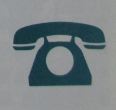Colour Language
Red is the most eye-catching colour and therefore communicates the most important information, allowing someone who is in a hurry to ignore other notices,
Colours have certain cultural and historical associations, although these can differ vastly in different countries around the world.
In airport wayfinding systems, you will often see black lettering on a yellow background. This is because yellow is known to attract attention, and black lettering on luminous yellow is easy to read.
In the United States, emergency exit signs are usually white with the word ‘EXIT’ in red or green, whereas in Europe they are green with white lettering or pictograms. Would it make sense for them to be standardized? In Germany, motorway signs are blue and ordinary road signs are yellow, while in Switzerland and Italy the former are green and the latter are blue. So which colour should be used for which purpose? There are practically no colours left for standardization, and in any case uniformity would surely mean cultural impoverishment.
Pictograms
For the Munich Olympic Games in 1972, Otl Aicher and Gerhard Joksch designed a system of pictograms that is still in use today. Visually, it has retained a sleek, modern look with its clear, faultless representation of forms and figures. Notice, for instance, how to smoke curls up from the cigarette, swirling from between the ash and the stem and not, as in so many poor imitations, above the ash itself.
Uebele, A. (2007) Signage systems & information graphics: a professional sourcebook. London: Thames & Hudson Ltd


































You must be logged in to post a comment.